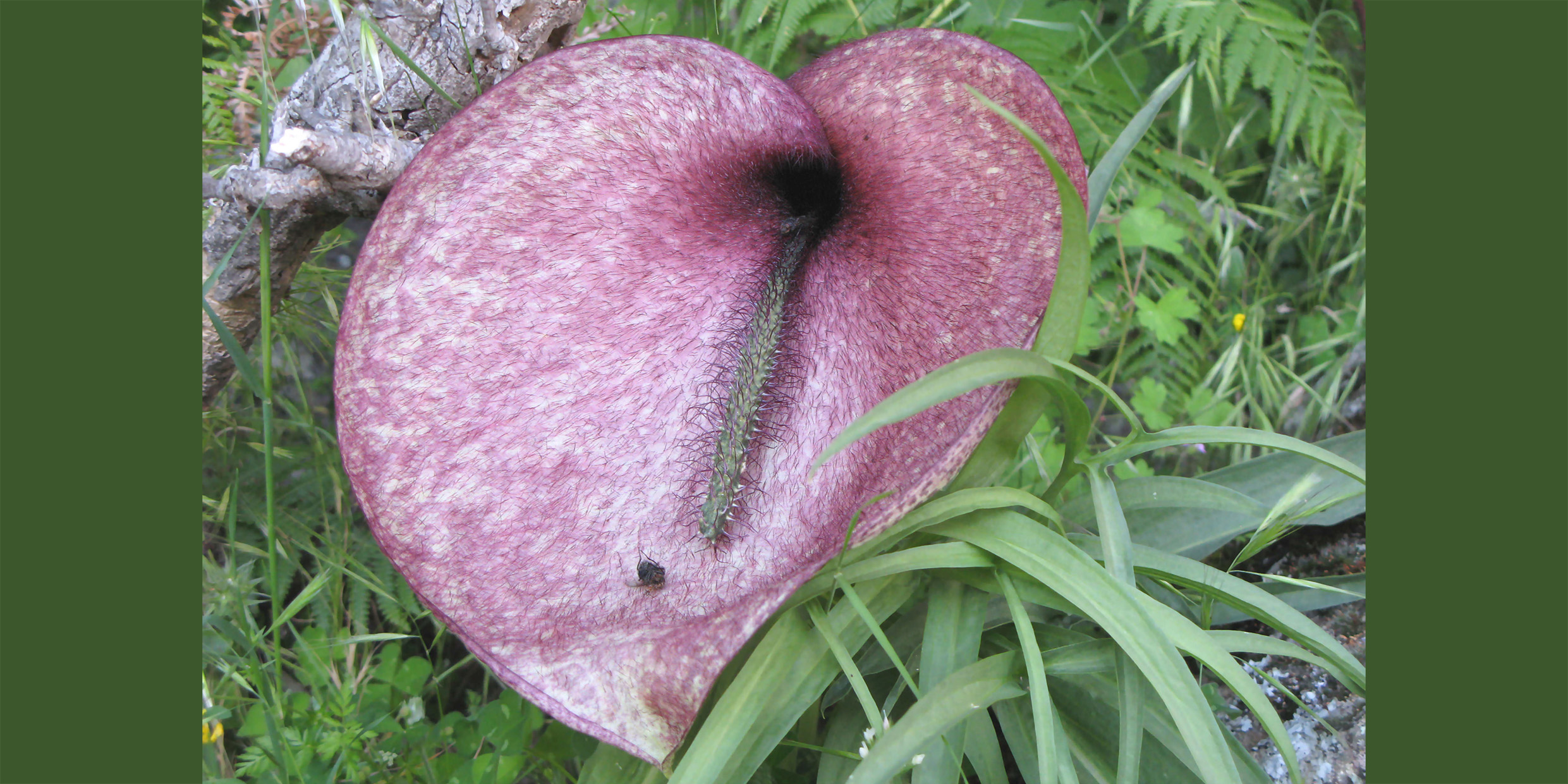Originally published 28 January 2003
Panegyric. There’s a word that’s not used much anymore. Elaborate public praise. A formal composition intended as a compliment.
What follows is a panegyric. I rise to applaud the dead-horse arum. I sing the praises of a flower that smells like rotting flesh.
Why admire a plant that smells like a dead horse and grows only on a few scrubby little islands in the Mediterranean?
I’ll tell you why. But first, let’s talk about sex.
Seed-bearing plants are sexual creatures. Like us, they need to get the male sperm to the female egg for fertilization. Like us, they have evolved lots of strategies for doing so.
Unlike us, plants cannot move about. A male plant can’t arrive at the door of a female plant bearing chocolates or other sweets. Plant fertilization must be accomplished at a distance.
The earliest seed plants used wind for pollination. The male sex organs produced copious amounts of pollen that blew away on the wind. With luck, some of it landed on the female parts of the same species of plant.
Needless to say, wind is an inefficient medium for sex. All that pollen blowing hither and yon is mostly wasted.
Then, about 100 million years ago, plants evolved a better way. They forged an alliance with insects as go-betweens. The plants provided insects with a source of food — nectar — and the insects obliged by carrying pollen from plant to plant.
The Earth blossomed as plants competed for the attention of insects, producing showy flowers and delicious scents to attract the insects they needed for reproduction.
“Candy is dandy, but liquor is quicker,” as Ogden Nash astutely observed. Sometimes the path to successfully bringing male and female together can be short-circuited by adopting a nonstandard strategy. So it is for humans, and so it is for flowering plants.
Which brings us to the dead-horse arum.
There are insects buzzing around out there besides those with a nose for nectar. There are carrion flies, for example, that deposit their eggs on decaying flesh, so that when the eggs hatch the larvae will have a ready source of nourishment. The adult flies don’t need much nourishment. During their brief lifetimes, they do little more than mate and lay eggs.
Female carrion flies are guided to dead animals by antennae that are exquisitely sensitive to certain chemicals — oligosulphides — produced during protein decomposition. Forget the sugar-sniffing bees and moths. The dead-horse arum goes for the carrion flies.
The blossom of the plant blooms for two days. On the first day, it produces a generous whiff of — you guessed it — oligosulphides, and carrion flies follow their noses — uh, antennae — straight down into the tube-shaped blossoms looking for decaying flesh.
By the time a fly realizes the deception, it is trapped. Its exit is blocked by the blossom’s downward-pointing bristles. Flailing about in its effort to escape, it comes in contact with the female part of the plant. If the fly has picked up pollen by previously visiting another arum, it will fertilize the plant.
The blossom remains closed until, on the second day, the plant’s male organs at the entrance of the tube start producing pollen. Then the blossom opens, the bristles retract, the fly crawls out, and gets covered with pollen as it goes. Being creatures of very little brain, flies fall for the same trick again and again, and thus does the pollen of dead-horse arum get carried about from plant to plant.
A group of Swedish and Italian scientists recently analyzed the stinks of dead-horse arum and decaying animal flesh, and the chemical mimicry is exact. The plant has evolved a perfect deceit, an irresistible come-hither.
Ah, sex. The ploys we use to make it work. The gambits. “Come up and see me sometime,” says Mae West, cocking her hip and batting her phony lashes. “Come up and see me sometime,” the dead-horse arum says with a whiff of stink, promising to be something that it’s not.
Hooray for Mae. Hooray for the dead-horse arum.



